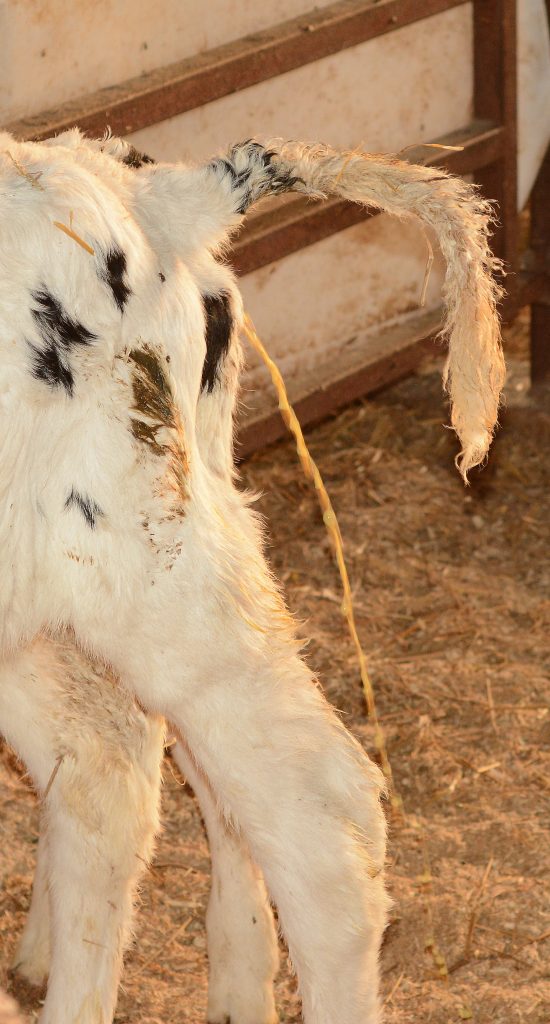Healthy Calf Conference
Follow to stay up-to-date on all Healthy Calf Conference updates. Speaker announcements, sponsorship information, registration announcements, and more.

Diarrhea is the single greatest cause of death in unweaned calves in Ontario, resulting from loss of fluids and complications from dehydration. Feeding calves good quality, clean colostrum, and providing a clean environment and good nutrition, will help reduce the amount of diarrhea within your herd.
Treatment costs are just one aspect of the economic impact caused by diarrhea. Further consequences include reduced growth rates, older age at first calving, reduced milk production in first lactation (loss of up to 320 kg) and increased likelihood of being culled.
The causes of diarrhea are often multifactorial, but predominantly come from the dam or other nearby cattle that contaminate the calf housing area with manure containing various bacteria, viruses, protozoa or parasites. Nutritional scours can be a result of either feeding too much or too little at one meal, or caused by milk that is not properly mixed or digested. You cannot differentiate whether diarrhea is nutritional or infectious based on its appearance.
Clinical signs in calves with diarrhea include loose manure that may have blood, a dull, depressed attitude, slowness or reluctance to stand, not exhibiting herd behaviour, and decreased or complete loss of appetite. In some cases, rectal temperature may be increased.
It is very important to begin addressing the problem as soon as the first visible signs appear. When infectious diarrhea organisms are involved, toxins are produced and cause inflammation and damage to the intestinal lining; large volumes of water and minerals are drawn from body tissues into the digestive tract and lost in the manure.
In the early stages of diarrhea, the calf can often be managed by administering oral electrolytes. As the disease progresses, the calf will quickly become dehydrated. A gaunt or hollow abdomen with sluggish behaviour might be observed. Administering an anti-inflammatory medication may help with pain (cramping, fever), and reduce the time a calf spends feeling poorly. They will then be more inclined to return to normal feeding behaviour.
Historically, it was commonplace to treat cases of diarrhea in calves with antimicrobial medications to kill or stop the growth of bacteria. In many cases, the causes of diarrhea in young calves (especially in calves older than one to two weeks) is because of viral or parasitic infections, and not caused by bacteria, making the use of antimicrobials ineffective. In cases where young calves have an elevated rectal temperature (fever), or appear very dull or depressed, the use of an antimicrobial medication may be necessary. Work with your veterinarian to determine where the best treatment protocol, and where antimicrobials, may fit into diarrhea therapy.
Fluid therapy is critical. Administer oral electrolytes (either by bottle or tube) and alternate milk feedings in the same amount. Restricting milk intake in calves with diarrhea is not recommended. Milk or milk replacer will not make diarrhea worse (if the milk is of good quality). When we restrict feeding sick calves, the energy and protein required to fight disease is not available. Many calves will starve if they continually lose nutrients through diarrhea without calories being replaced. Do not administer milk or milk replacer to calves via an esophageal feeder. This milk will enter the rumen causing further issues.
The Code of Practice for the Care and Handling of Veal Cattle recommends consulting your veterinarian when more than six per cent of the herd is suffering from an outbreak, such as diarrhea. Your veterinarian is a valuable resource, and can investigate the cause and risk factors leading to disease by evaluating clear and accurate treatment records. They are also able to help treat sick calves that have lost their suckle reflex, are not inclined to drink or unable to stand. At these stages, the calf may require intravenous fluids and other medications and your veterinarian can show you how to administer them.
One of the keys to preventing diarrhea outbreaks is to reduce the number of infectious pathogens in the environment that the calf is able to ingest. Keep stocking densities low, and bedding, pen/hutch walls, and feeding/medicating equipment clean. Separate the newborn calf from the dam as soon as possible to avoid exposure to bacteria and ensure calves receive four litres of high quality colostrum as soon as possible after birth. Mortality rates are much higher in calves with low levels of immunoglobulins.
Vaccinating pregnant cows and heifers will boost the antibodies available in colostrum for the calf to defend itself against diarrhea pathogens. Vaccination is a worthwhile tool, but is not a replacement for inadequate management. These should be used in conjunction with a good colostrum and nutrition program, and proper cleaning protocols. Discuss the causes of, and solutions to, diarrhea outbreaks with your veterinarian. This will prevent unnecessary treatment
Follow to stay up-to-date on all Healthy Calf Conference updates. Speaker announcements, sponsorship information, registration announcements, and more.
The Codes of Practice are nationally developed guidelines for the care and handling of farm animals. They serve as our national understanding of animal care requirements and recommended practices.